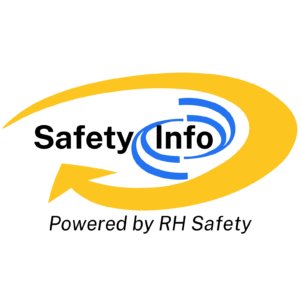
Coronavirus (Covid-19) Workplace Safety Training Programs
Use this information for free and to feel free to share with anyone else. The downloadable versions can be found above each section.
Fact Sheet
What to do if you are sick with 2019 Novel Coronavirus (2019-nCoV)
If you are sick with 2019-nCoV follow the steps below to help prevent 2019-nCoV from spreading to people in your home and community.
Stay home except to get medical care
You should not leave your home, except to get medical care. Do not go to work, school, or public areas, and do not use public transportation or taxis.
Separate yourself from other people in your home
As much as possible, you should stay in a different room from other people in your home. Also, you should use a separate bathroom, if available.
Call ahead before visiting your doctor
Before your medical appointment, call the healthcare provider and tell them that you have, or are being evaluated for, 2019-nCoV infection. This will help the healthcare provider’s office take steps to keep other people from getting infected.
Wear a facemask
You should wear a facemask when you are in the same room with other people and when you visit a healthcare provider. If you cannot wear a facemask, the people who live with you should wear one while they are in the same room with you.
Cover your coughs and sneezes
Cover your mouth and nose with a tissue when you cough or sneeze, or you can cough or sneeze into your sleeve. Throw used tissues in a lined trash can, and immediately wash your hands with soap and water for at least 20 seconds.
Wash your hands
Wash your hands often and thoroughly with soap and water for at least 20 seconds. Use an alcohol-based hand sanitizer that contains at least 60% alcohol if soap and water are not available. Avoid touching your eyes, nose, and mouth with unwashed hands.
Avoid sharing household items
You should not share dishes, drinking glasses, cups, eating utensils, towels, bedding, or other items with other people in your home. After using these items, you should wash them thoroughly with soap and water.
Monitor your symptoms
Get medical care quickly if your illness is getting worse (for example if you are having trouble breathing). Call the healthcare provider ahead of time and tell them that you
have, or are being evaluated for, 2019-nCoV infection. This will help the healthcare provider’s office take steps to keep other people from getting infected.
Fact Sheet #2
Coronavirus Prevention
Prevention
There is currently no vaccine to prevent 2019-nCoV infection. The best way to prevent infection is to avoid being exposed to this virus. However, as a reminder, CDC always recommends everyday preventive actions to help prevent the spread of respiratory viruses, including:
- Wash your hands often with soap and water for at least 20 seconds. Use an alcohol-based hand sanitizer that contains at least 60% alcohol if soap and water are not available.
- Avoid touching your eyes, nose, and mouth with unwashed hands.
- Avoid close contact with people who are sick.
- Stay home when you are sick.
- Cover your cough or sneeze with a tissue, then throw the tissue in the trash.
- Clean and disinfect frequently touched objects and surfaces.
These are everyday habits that can help prevent the spread of several viruses. CDC does have specific guidance for travelers
Treatment
There is no specific antiviral treatment recommended for 2019-nCoV infection. People infected with 2019-nCoV should receive supportive care to help relieve symptoms. For severe cases, treatment should include care to support vital organ functions.
People who think they may have been exposed to 2019-nCoV should contact your healthcare provider immediately.
PowerPoint
There is currently no vaccine to prevent coronavirus disease 2019 (COVID-19).
The best way to prevent illness is to avoid being exposed to this virus.
The virus is thought to spread mainly from person-to-person. Between people who are in close contact with one another (within about 6 feet). Through respiratory droplets produced when an infected person coughs or sneezes.
These droplets can land in the mouths or noses of people who are nearby or possibly be inhaled into the lungs.
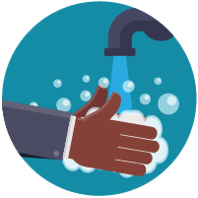
Take steps to protect yourself
• Wash your hands often with soap and water for at least 20 seconds especially after you have been in a public place, or after blowing your nose, coughing, or sneezing.
• If soap and water are not readily available, use a hand sanitizer that contains at least 60% alcohol. Cover all surfaces of your hands and rub them together until they feel dry.
• Avoid touching your eyes, nose, and mouth with unwashed hands.
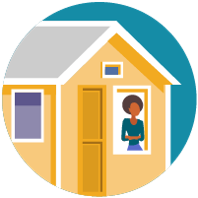
Avoid close contact
• Avoid close contact with people who are sick
• Put distance between yourself and other people if COVID-19 is spreading in your community. This is especially important for people who are at higher risk of getting very sick.
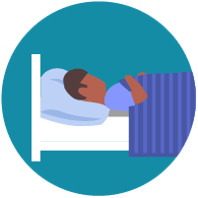
Stay home if you're sick
Stay home except to get medical care
• Stay home: People who are mildly ill with COVID-19 are able to recover at home. Do not leave, except to get medical care. Do not visit public areas.
• Stay in touch with your doctor. Call before you get medical care. Be sure to get care if you feel worse or you think it is an emergency.
• Avoid public transportation: Avoid using public transportation, ride-sharing, or taxis.
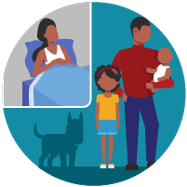
Seperate yourself from other people in your home, this is known as home isolation
Stay away from others: As much as possible, you should stay in a specific “sick room” and away from other people in your home. Use a separate bathroom, if available.
Limit contact with pets & animals: You should restrict contact with pets and other animals, just like you would around other people.
Although there have not been reports of pets or other animals becoming sick with COVID-19, it is still recommended that people with the virus limit contact with animals until more information is known.
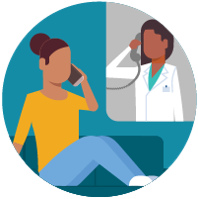
Call ahead before visiting your doctor
Call ahead: If you have a medical appointment, call your doctor’s office or emergency department, and tell them you have or may have COVID-19. This will help the office protect themselves and other patients.
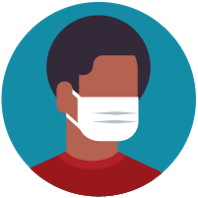
Wear a facemask if you are sick
If you are sick: You should wear a facemask when you are around other people and before you enter a healthcare provider’s office.
If you are caring for others: If the person who is sick is not able to wear a facemask (for example, because it causes trouble breathing), then people who live in the home should stay in a different room. When caregivers enter the room of the sick person, they should wear a facemask.
Visitors, other than caregivers, are not recommended.
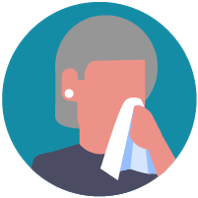
Cover your coughs and sneezes
• Cover: Cover your mouth and nose with a tissue when you cough or sneeze.
• Dispose: Throw used tissues in a lined trash can.
• Wash hands: Immediately wash your hands with soap and water for at least 20 seconds. If soap and water are not available, clean your hands with an alcohol-based hand sanitizer that contains at least 60% alcohol.

Clean your hands often
• Wash hands: Wash your hands often with soap and water for at least 20 seconds. This is especially important after blowing your nose, coughing, or sneezing; going to the bathroom; and before eating or preparing food.
• Hand sanitizer: If soap and water are not available, use an alcohol-based hand sanitizer with at least 60% alcohol, covering all surfaces of your hands and rubbing them together until they feel dry.
• Soap and water: Soap and water are the best option, especially if hands are visibly dirty.
• Avoid touching: Avoid touching your eyes, nose, and mouth with unwashed hands.
Follow Five Stops to Wash Your Hands the Right Way
1. Wet your hands with clean, running water (warm or cold), turn off the tap, and apply soap.
2. Lather your hands by rubbing them together with the soap. Lather the backs of your hands, between your fingers, and under your nails.
3. Scrub your hands for at least 20 seconds. Need a timer? Hum the “Happy Birthday” song from beginning to end twice.
4. Rinse your hands well under clean, running water.
5. Dry your hands using a clean towel or air dry them.
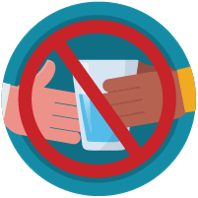
Avoid sharing personal household items
• Do not share: Do not share dishes, drinking glasses, cups, eating utensils, towels, or bedding with other people in your home.
• Wash thoroughly after use: After using these items, wash them thoroughly with soap and water or put in the dishwasher.
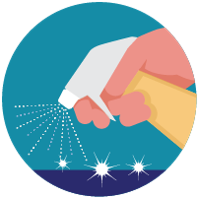
Clean all "high-touch" surface everyday
Clean high-touch surfaces in your isolation area (“sick room” and bathroom) every day; let a caregiver clean and disinfect high-touch surfaces in other areas of the home.
Clean and disinfect: Routinely clean high-touch surfaces in your “sick room” and bathroom. Let someone else clean and disinfect surfaces in common areas, but not your bedroom and bathroom.
If a caregiver or other person needs to clean and disinfect a sick person’s bedroom or bathroom, they should do so on an as-needed basis. The caregiver/other person should wear a mask and wait as long as possible after the sick person has used the bathroom.
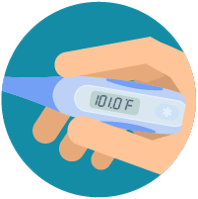
Monitor your symptoms
Seek medical attention, but call first: Seek medical care right away if your illness is worsening (for example, if you have difficulty breathing). Call your doctor before going in: Before going to the doctor’s office or emergency room, call ahead and tell them your symptoms. They will tell you what to do.
Wear a facemask: If possible, put on a facemask before you enter the building. If you can’t put on a facemask, try to keep a safe distance from other people (at least 6 feet away). This will help protect the people in the office or waiting room.
Facemask may not be available!
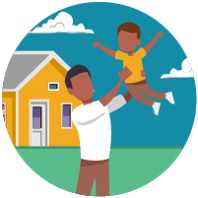
• People with COVID-19 who have stayed home (home isolated) can stop home isolation under the following conditions:
• If you will not have a test to determine if you are still contagious, you can leave home after these three things have happened:
• You have had no fever for at least 72 hours (that is three full days of no fever without the use medicine that reduces fevers)
AND
• Other symptoms have improved (for example, when your cough or shortness of breath have improved)
AND
• At least 7 days have passed since your symptoms first appeared
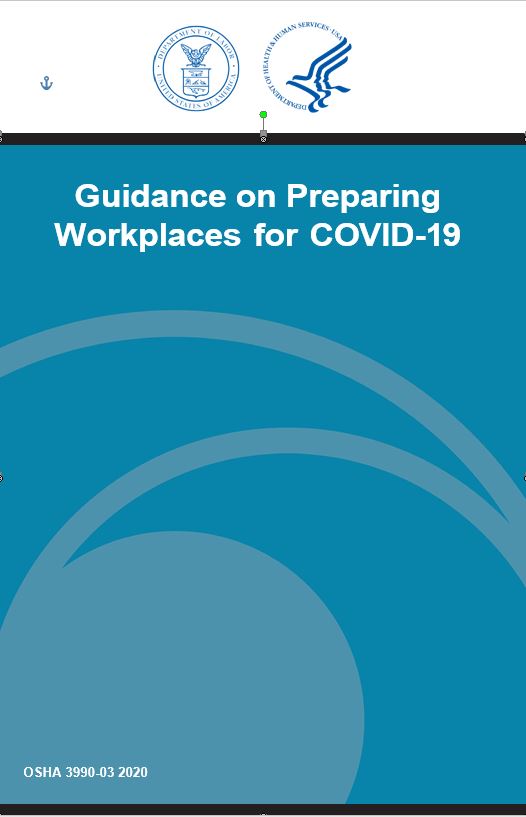

GET INSTANT ACCESS
to THE MEMBERS LIBRARY
Safety materials created by safety professionals.
Access to the Safety Manager software.
Wide variety of safety videos and courses.
**Brand New** Safety Training Management System
Pre-Made Safety Materials Ready For Use
Created by experienced safety professionals & risk consultants. Saving you time, money, and risk of injuries.
95% of the work already done.
Below are the maximum penalty amounts, with the annual adjustment for inflation, that may be assessed after Jan. 15, 2024. (See OSHA Memo, Jan. 8, 2024).
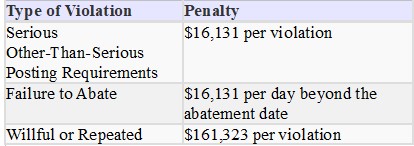
**New OSHA HEAT 90 DAY**
>>Download Free HERE<<
**New 2024 OSHA 300 Form**
>>Download Free HERE<<
**Brand New**
Free with full membership subscription
Training LMS System
Ask The Safety Consultant
Safety Equipment Deal Finder
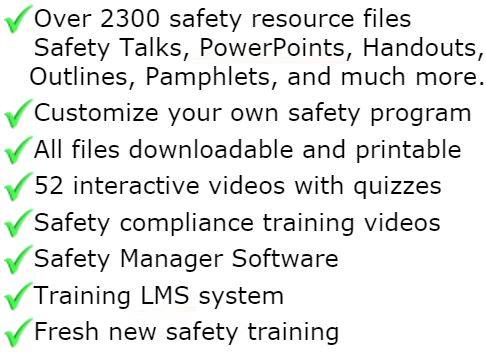
“SafetyInfo.com is the first go-to website for safety professionals and companies to use in establishing a solid safety program"
-Mike McKenzie, Certified Safety & Health Manager (CSHM), McSafety Solutions™
Note: You must have a full subscription to the Safety Library in order to use this material. Any use outside of your organization, for resell, or without an active membership is strictly prohibited and may result in prosecution under copyright infringement laws. Please contact us first, if you would be interested in reselling or using our materials for reproduction.
Inside the Members Library
Topic Index
Accident Prevention
Air Quality
Asbestos
Bloodborne Pathogens
Boilers
Chemical Safety
Compressed Gas
Confined Space
Construction
Construction Worksite
Cranes & Slings
Driver / Fleet Safety
Drug Free Workplace
Electrical
Emergency Management
Engineering Safety
Environmental
Equipment
Ergonomics
Fall Protection
Fire Safety & Prevention
First Aid
Flammable Materials
Forklifts
Hazard Communication
Hazardous Materials
Hearing Protection
Heat Stress
Hot Work
Housekeeping
Job Safety Analysis
Laboratory
Ladders
Lead
Lockout-Tagout
Machinery & Equipment
Material Handling
MSDS (SDS)
Medical & First Aid
Occupational Health
Office Safety
Off the Job Safety
Personal Protection
Process Safety
Record Keeping
Respiratory Protection
Silica Safety
Rules & Policies
Signs & Labels
Slips, Trips & Fall
Training
Terrorism Programs
Tool Safety
Vehicle & Driver
Violence Programs
Welding & Hot Work
Training Videos
Library Index
Training Materials
Videos/Courses
Talks
Articles
PowerPoint
Handouts
Training Overheads
Quizzes
Supervisor Briefs
Management Briefs
Safety Sessions
2 Minute OSHA Safety Talks
Pamphlets
First Aid Training
Supervisor Training
Hazardous Materials
Bomb Threat
Crossword Puzzles
Biological Agents
Forms & Documents
Forms
Checklists
Audit Guides
Inspections Guides
Signs & Labels
Environmental Audit Guides
Recordkeeping - OSHA 300
Sign & Label Maker
Safety Management Resources
Safety Manuals/Written Programs
Ergonomic Programs
Emergency Plans
Process Safety Management
Construction Safety
Occupational Health
Environmental
Topic Sheets
DOT Fleet-Driver
Hazardous Materials
Chemical Safety
Drug Free Workplace
Terrorism Programs
Development Guides
Safety Manager Software
Safety References & Graphics
Technical Safety Information
Posters
Topic & Fact Sheets
Development Information
Job Specific Safety Rules
Terrorism
Calculators
Safety Comic Strips
New Safety Training System
Schedule and train your employees with our materials. Add unlimited amount of employees. Record all progress and issue certificates. For group and individual training sessions.

